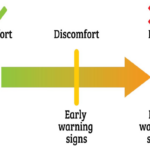This article has been kindly shared by Alison Richmond from Provention.
The Flatfoot Squat – A Natural Resting Position
Believe it or not, a chair or couch is not the body’s natural resting position. Instead, the flatfoot squat has been used for centuries.
However, squatting is not practical for many modern activities. Tasks like working at a desk or driving require sitting in chairs. As a result, long periods of sitting have become common. Unfortunately, this has led to an increase in back pain.
This article explains why the flatfoot squat should be incorporated into daily movement. A Provention video is also provided below to demonstrate the correct technique.
The Impact of Sitting for Too Long
When practiced regularly, the flatfoot squat supports joint health, reduces muscle pain, and improves posture. It also helps relieve tension in the lower back and supports bowel health. These benefits make it an important exercise for counter-acting the negative effects of prolonged sitting.
Natural Movement and the Flatfoot Squat
The First Move programme teaches safe and effective body movement.
The flatfoot squat is a key component of this approach. It helps maintain mobility and prevents injuries.
Historically, this movement was natural. Many cultures without chairs continue to squat throughout their lives. Young children instinctively squat before learning to sit. However, in modern societies, this movement has become rare.
Years ago, squatting was considered unusual. It was not widely recognised as a way to prevent injuries. Today, many health professionals and fitness experts promote it for mobility, strength, and overall wellbeing.
Insights from TED Talk: Roger Frampton on Movement
In his TED Talk, “Why Sitting Down Destroys You,” Roger Frampton highlights the importance of natural movement. Some key takeaways include:
-
Sitting in chairs negatively impacts health.
-
Moving naturally activates muscles properly, leading to better posture and strength.
-
Many traditional exercise routines do not support functional movement.
-
The commonly accepted ‘S-curve’ spine position may not be ideal.
The Benefits of the Flatfoot Squat
Hip Joint Health
Regular squatting maintains mobility and prevents arthritis. Hip replacements can often be avoided by practicing this movement.
Lower Back Health
The lumbar discs benefit from regular squatting. This movement helps reverse the effects of prolonged sitting, repetitive bending, and twisting. Muscle tension and pain are also relieved.
Bowel Health
Squatting has been linked to better digestive health. The use of squat toilets is considered more natural and may reduce the risk of bowel-related issues, including irritable bowel syndrome and certain cancers.
How to Perform the Flatfoot Squat Safely
A step-by-step guide is provided in the Provention video below. If attempting this movement, caution should be taken. Individuals with knee pain should modify or avoid the squat if discomfort occurs.
How to do a Flat Foot Squat by Alison Richmond, Provention
By incorporating the flatfoot squat into daily routines, many health issues caused by excessive sitting can be reduced.
This simple yet powerful movement supports long-term mobility, posture, and overall well-being.
If you decide to try the flat foot squat, take care if you have any knee pain and avoid the activity if there is any discomfort






